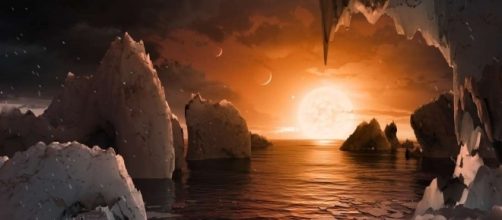Astronomers have just made a major discovery while looking for signs of life outside of our Solar System. They have found seven Earth-sized planets, three of which could be inhabitable, orbiting a star. This newly discovered system has been named TRAPPIST-1. The star is an ultra-cool dwarf star that is only 8% the mass of our Sun and 11% of its radius. That makes this central star roughly the size of Jupiter. Scientists could know within ten years whether or not any of these planets hold life.
The Discovery
These findings were led by Michael Gillon of the University of Liège in Belgium.
Using NASA's Spritzer Space Telescope and multiple ground telescopes, astronomers observed the patterns of the planets relative to us as they moved around their star. In a press briefing, Gillon said, "The star is so small and cold that the planets are temperate, which means that they could have some liquid water and maybe life by extension on the surface." In order from the closest to furthest from the star, the planets have been named TRAPPIST-1b, c, d, e, f, g, and h. These planets range from 0.76 times Earth's radius to 1.13. With the star being so cold, inhabitable planets will need to orbit much closer than Earth does to the Sun. The planet closest to the star, TRAPPIST-1b, orbits at 0.011 AU (AU is the distance from Earth to the Sun.) This means that this particular planet completes an entire orbit in 1.51 days.
The next six planets complete their orbits anywhere between 2.42 and 20 days. Astronomers also believe that these planets are tidally locked to the star. This means that the same face of the planet always points toward the star. If water is found, half would be liquid while the other half would be ice.
Potential for life
Sustainability of life on any of these planets depends on a variety of factors. Do any of these planets have atmospheres? If so, does the atmosphere allow the planet to retain water in a liquid state? Lifeforms would also need to be capable of producing enough gas to alter the chemical composition of the planet's atmosphere. This is not the first time a potentially inhabitable world has been discovered in space.
Proxima b was discovered several years ago. Astronomers have compared TRAPPIST-1 to Proxima, stating that the newly discovered star is quieter and its solar activity could replenish an atmosphere, rather than destroy it. Being ten times further away from Earth than Proxima, scientists are not planning to send a spacecraft anytime soon. However, with advancements in technology, astronomers believe they can collect enough data to say for sure whether or not these planets can hold life within the next ten years.

